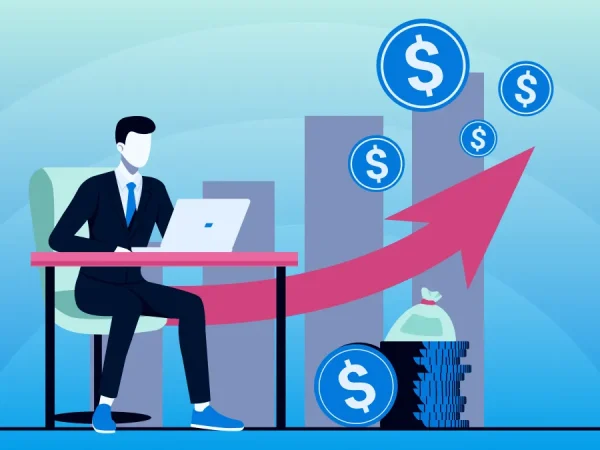Managing Student Loans: Repayment Options and Loan Forgiveness Programs

As the cost of higher education continues to rise, many students turn to student loans to fund their academic pursuits. While these loans provide access to education, they often leave graduates burdened with substantial debt after graduation. Managing student loans effectively is crucial to achieving financial stability and pursuing other life goals. In this article, we will explore various repayment options and loan forgiveness programs available to ease the burden of student loans.
Repayment Options for Student Loans
1. Standard Repayment Plan
The standard repayment plan is the default option offered to borrowers by most federal loan programs. Under this plan, borrowers make fixed monthly payments over a period of ten years. This option is suitable for those who can afford the higher monthly payments and want to pay off their loans as quickly as possible. However, it may not be the best fit for individuals with lower income levels or those facing financial challenges.
2. Income-Driven Repayment Plans
Income-driven repayment plans are designed to align monthly loan payments with a borrower’s income and family size. These plans include the following options:
a. Income-Based Repayment (IBR) Plan
The IBR plan caps monthly payments at a percentage of the borrower’s discretionary income, typically around 10% to 15%. Additionally, the repayment term is extended to 20 or 25 years, depending on whether the loans are for undergraduate or graduate studies. After this period, any remaining balance may be forgiven, although the forgiven amount is considered taxable income.
b. Pay As You Earn (PAYE) Plan
The PAYE plan is similar to IBR, but the monthly payments are capped at 10% of the borrower’s discretionary income, and the repayment term is limited to 20 years. To qualify for PAYE, borrowers must demonstrate financial need and have taken out loans after a specific date.
c. Revised Pay As You Earn (REPAYE) Plan
The REPAYE plan is open to all federal loan borrowers, regardless of when they obtained their loans. Monthly payments are set at 10% of discretionary income, and the repayment term is extended to 20 or 25 years for undergraduate or graduate loans, respectively. One significant feature of REPAYE is the interest subsidy for certain loans, where the government covers part of the unpaid interest for the first three years of the plan.
d. Income-Contingent Repayment (ICR) Plan
The ICR plan bases monthly payments on either 20% of the borrower’s discretionary income or the amount they would pay on a 12-year fixed repayment plan. The repayment term is 25 years, and any remaining balance at the end of the term is eligible for forgiveness, taxable as income.
3. Graduated Repayment Plan
The graduated repayment plan offers lower initial monthly payments that gradually increase every two years. The repayment term typically spans over ten years. This option is suitable for recent graduates who anticipate their income to grow steadily in the coming years.
4. Extended Repayment Plan
The extended repayment plan allows borrowers to stretch their repayment term up to 25 years, depending on the total loan amount. Monthly payments can be either fixed or graduated. While this option reduces the monthly financial burden, it also means paying more interest over the extended term.
Loan Forgiveness Programs
1. Public Service Loan Forgiveness (PSLF)
The Public Service Loan Forgiveness program is intended for borrowers working in qualifying public service jobs. To be eligible, borrowers must make 120 qualifying monthly payments while working full-time for a qualifying employer. After meeting the requirements, the remaining loan balance is forgiven, tax-free. It’s essential to note that not all loans and repayment plans are eligible for PSLF, so borrowers need to meet specific criteria and ensure they are on a qualifying plan.
2. Teacher Loan Forgiveness
The Teacher Loan Forgiveness program aims to support teachers working in low-income schools. Eligible teachers can receive forgiveness of up to $17,500 on Direct Subsidized and Unsubsidized Loans or Subsidized and Unsubsidized Federal Stafford Loans. To qualify, teachers must meet certain criteria, including teaching full-time for five consecutive academic years in a designated low-income school.
3. Perkins Loan Cancellation
The Perkins Loan Cancellation program provides loan cancellation benefits for borrowers with Federal Perkins Loans. The cancellation options vary depending on the borrower’s profession, such as teachers, nurses, military personnel, or law enforcement officers. Each profession has specific requirements that must be met to qualify for loan cancellation.
4. Income-Driven Repayment Forgiveness
Borrowers on income-driven repayment plans may be eligible for forgiveness after making consistent payments for 20 or 25 years, depending on the plan. Any remaining balance after this period will be forgiven, though the forgiven amount is taxable as income.
5. State-Specific Loan Forgiveness Programs
Many states offer loan forgiveness programs for residents working in certain professions or underserved areas. These programs vary by state and may provide partial or full loan forgiveness for eligible borrowers.
Conclusion
Managing student loans can be challenging, but with the right knowledge of repayment options and loan forgiveness programs, borrowers can find relief and achieve financial freedom. It’s essential to assess personal financial circumstances and choose a repayment plan that aligns with individual goals and capabilities. Additionally, for those eligible, exploring loan forgiveness programs can significantly reduce the burden of student debt. Whether through income-driven plans or specific forgiveness initiatives, these options present opportunities for borrowers to shape a more secure financial future.
FAQs
FAQ 1: Can I switch repayment plans if my financial situation changes?
Yes, borrowers can change their repayment plans to better suit their financial circumstances. If you find it difficult to keep up with your current plan, consider switching to an income-driven plan with lower monthly payments. Conversely, if you can afford higher payments and want to pay off your loans faster, you can switch to the standard repayment plan.
FAQ 2: Will enrolling in an income-driven repayment plan affect my credit score?
No, enrolling in an income-driven repayment plan does not directly impact your credit score. As long as you make the required payments on time, your credit score will not be negatively affected. However, consistently missing payments or defaulting on your loans will have adverse effects on your credit score.
Remember, managing student loans is a journey that requires careful planning and proactive decisions. By understanding the available repayment options and loan forgiveness programs, borrowers can navigate the complexities of student loans and pave the way for a more financially secure future.
Read More: Green Finance: Investing in a Sustainable and Eco-Friendly Future











